In the west of Yamaguchi prefecture, bordering Hiroshima, is the historical city of Iwakuni. It’s most famous for its arched bridge, which is one of the Nihon Sanmeikyo, or Three Famous Bridges of Japan. Iwakuni is also known for its eponymous castle, prevalence of white snakes, and United States Marine Corps air station. And thanks to its proximity to Hiroshima, it makes a great day trip for tourists to the area.
It all sounded very intriguing, and so one long weekend in November, I decided to check it out. As fate would have it, an old friend happened to be in Japan at the same time, so we decided to link up and do it together. Pete and I met about nine years ago through a mutual friend when I was first living in Japan. We spent that day rowing down the sacred waters of Takachiho Gorge in Miyazaki. Now, it was time to explore a river of a different kind.
The Nishiki is the longest river in Yamaguchi Prefecture. It flows for 110 km (68 mi), from the mountains of northern Iwakuni into the Seto Inland Sea. The clear waters have created the ideal location for sake brewing, making Iwakuni home to a number of world-famous brands, like Dassai.
The Nishiki also served as a natural moat for the original Iwakuni Castle, which sat atop Mount Shiroyama. Today, you can visit the replica version on the same site. To do so, you have to cross the Nishiki either via the famed Kintaikyo or the parallel Kinjo Bridge. Both are a short walk away from Kintaikyo Bus Station.
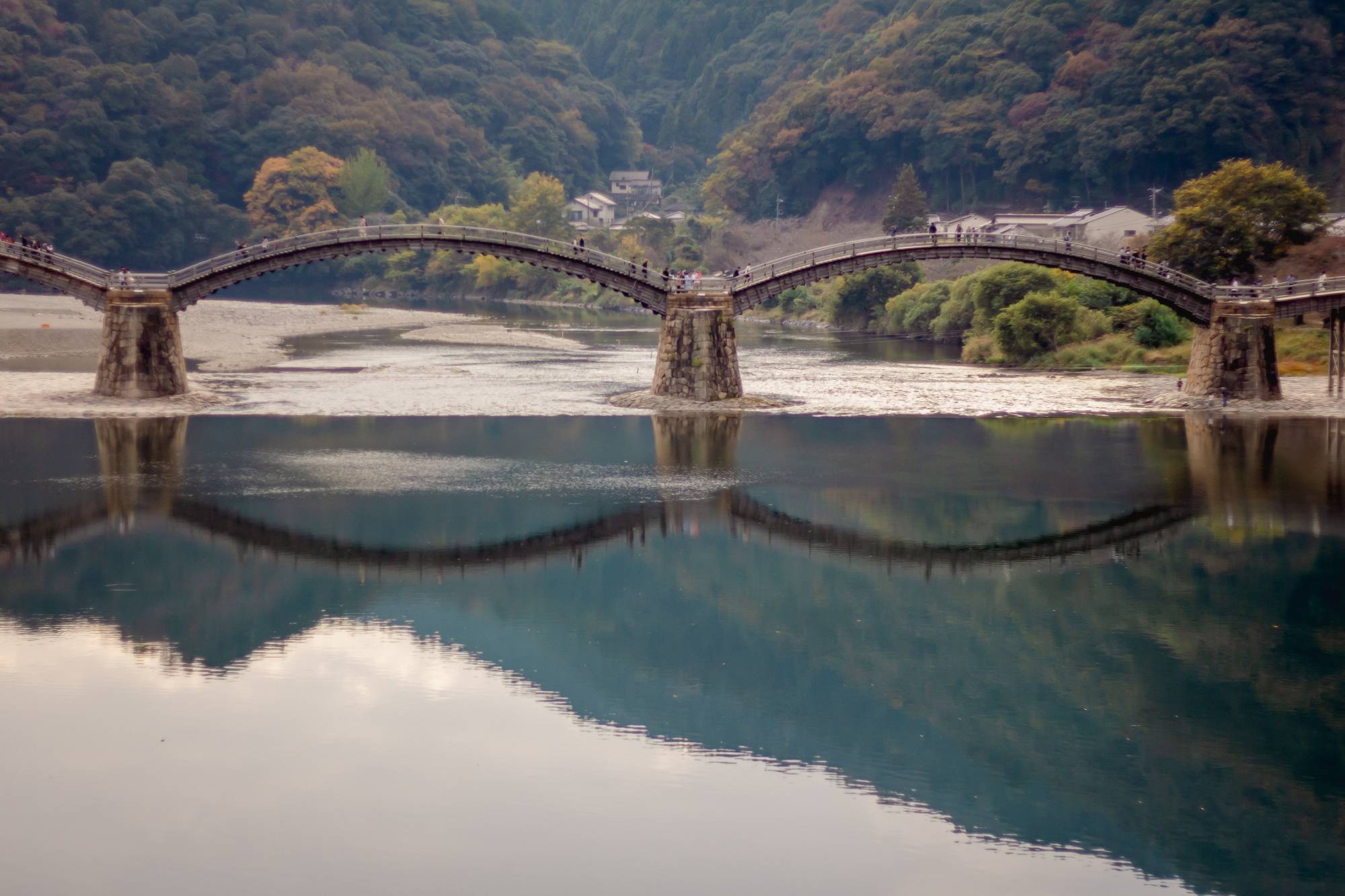
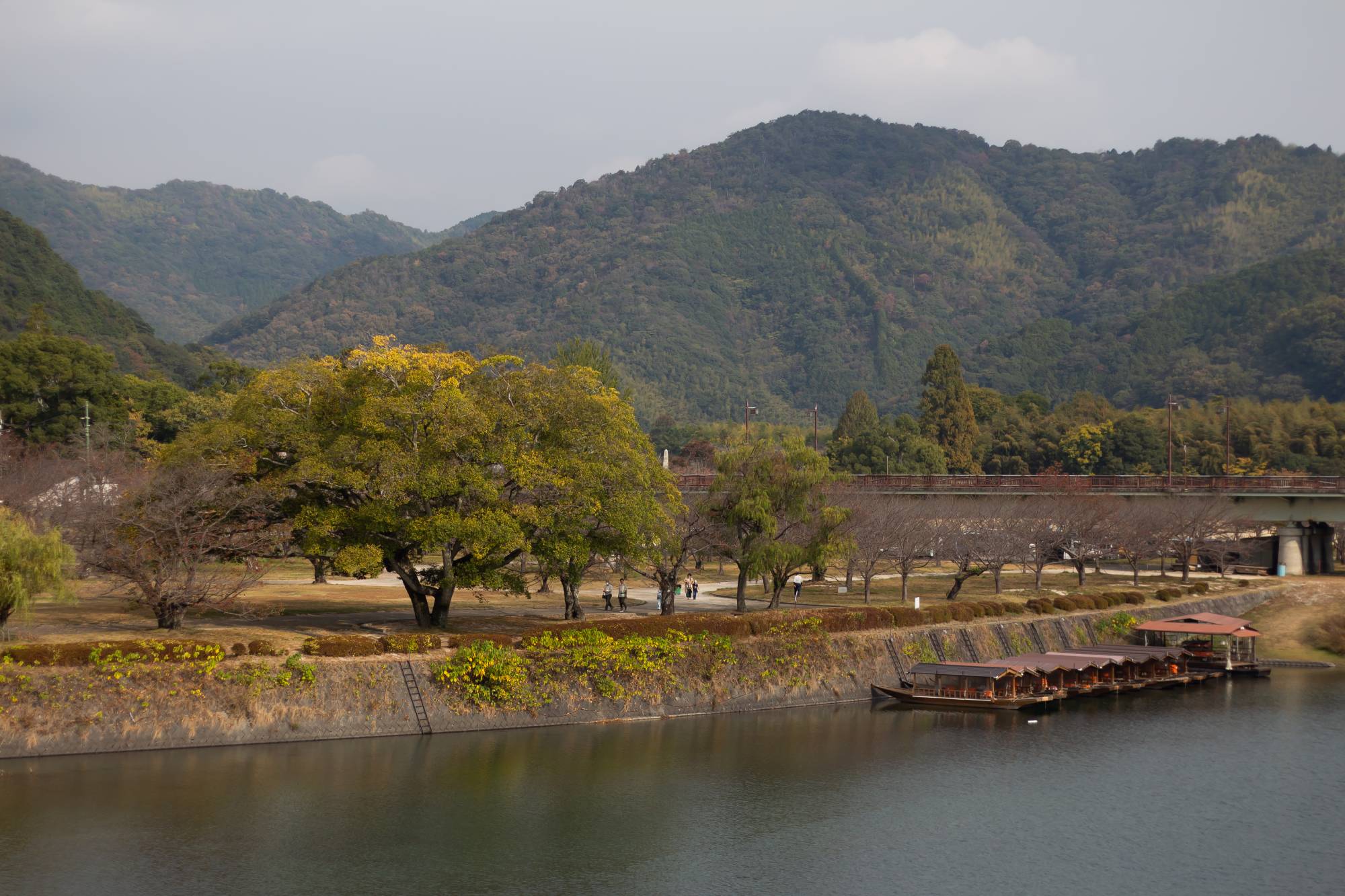
It’s pretty easy to get there from JR Iwakuni Station, we found, since there are several buses headed in that direction. It took about 20 minutes in total and cost roughly 300円 ($2). You also have to pay to cross Kintaikyo, whereas Kinjo Bridge is free. Iwakuni Castle and the Ropeway (which takes you to the castle) have separate entrance fees, too. You can also hike up Mount Shiroyama, but, in a funny coincidence, both Pete and I were recovering from busted ankles.
In the end we decided to go for a ticket set, which would grant us access to Kintaikyo, Iwakuni Castle, and the Ropeway. It cost 1140円 ($8) and came with coupons for discounts at other nearby attractions, like the Iwakuni Shirohebi Museum. The ticket office sits at the entrance to the bridge, so once we paid, all that was left to do was cross.
Kintaikyo stretches for 193.3 m (634 ft) long and 5 m (16.4 ft) wide across the Nishiki River and consists of five wooden arches supported by three stone piers. The arches are made from Japanese cypress, zelkova, pine, white cedar, chestnut, and oak. The foundation consists of reinforced concrete while the outer is finished with granite. It’s a continuous structure, and was originally built without a single nail. The design is certainly unique and it was a pretty fun experience walking up and down each arch, following the curves.
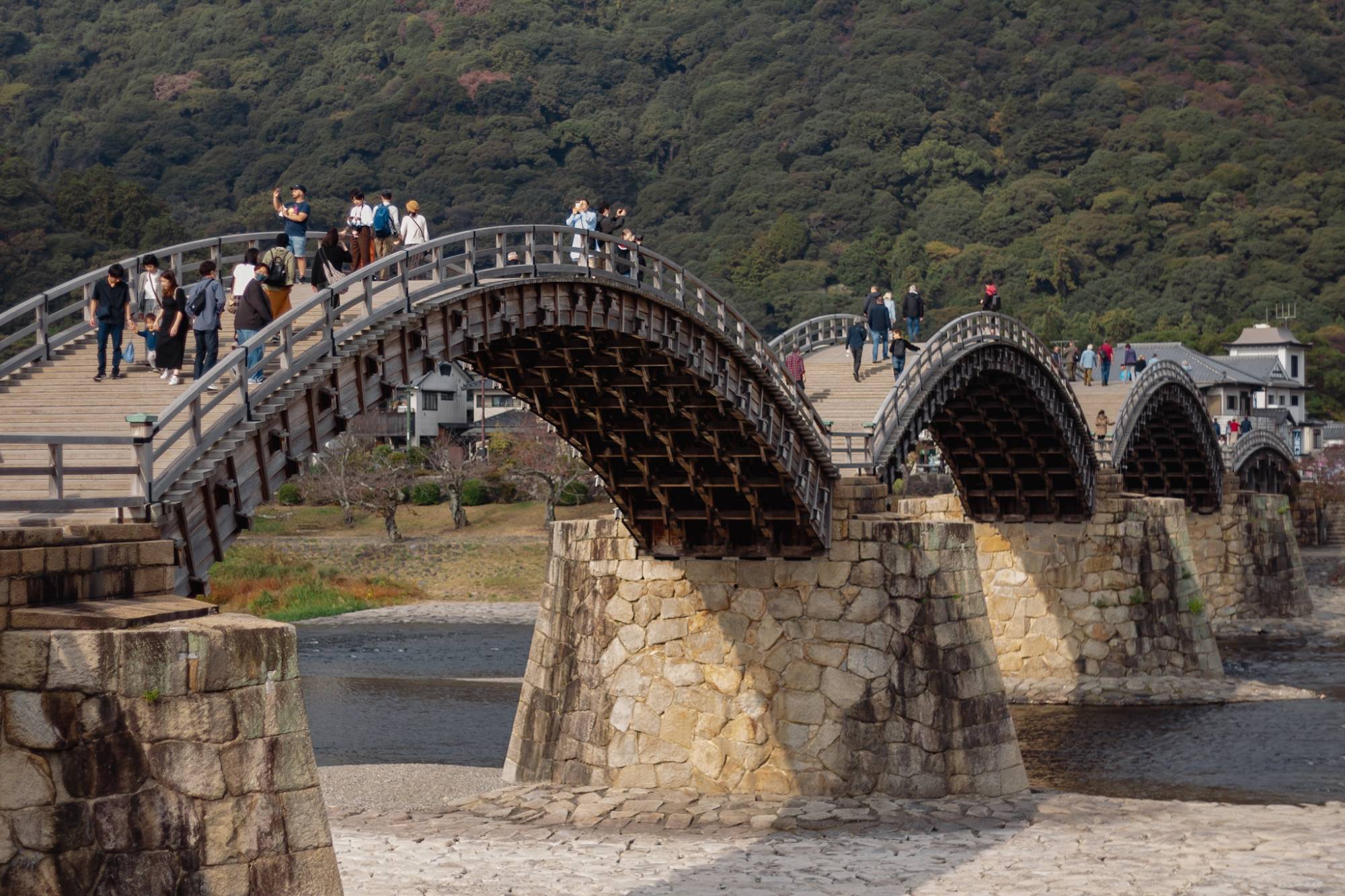
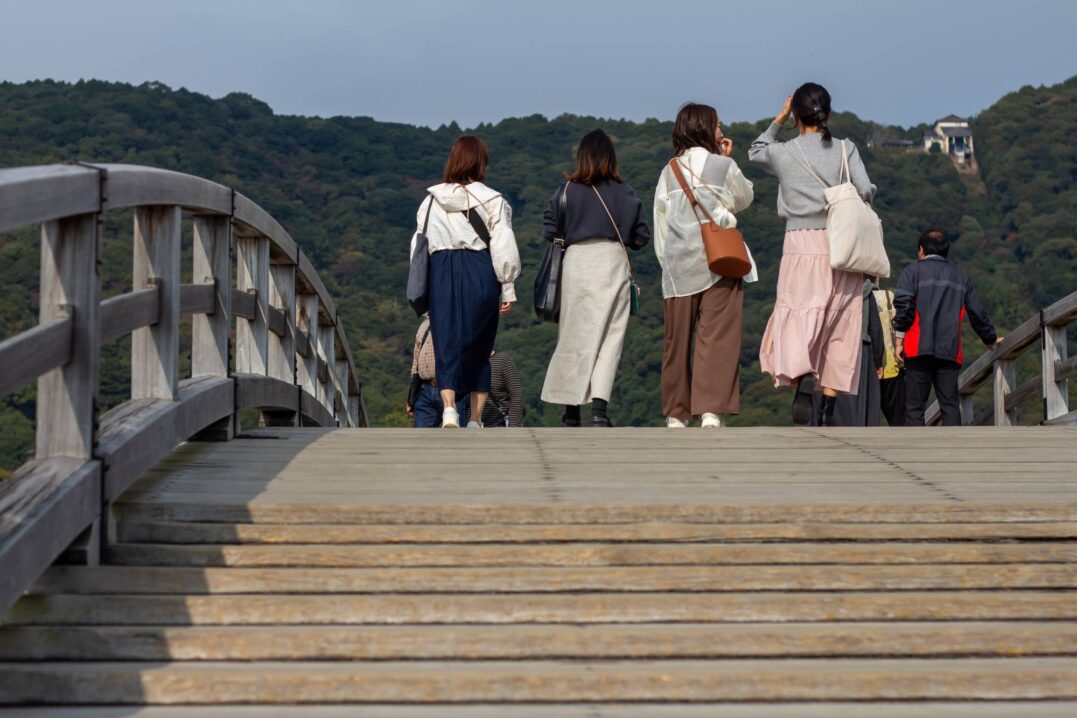
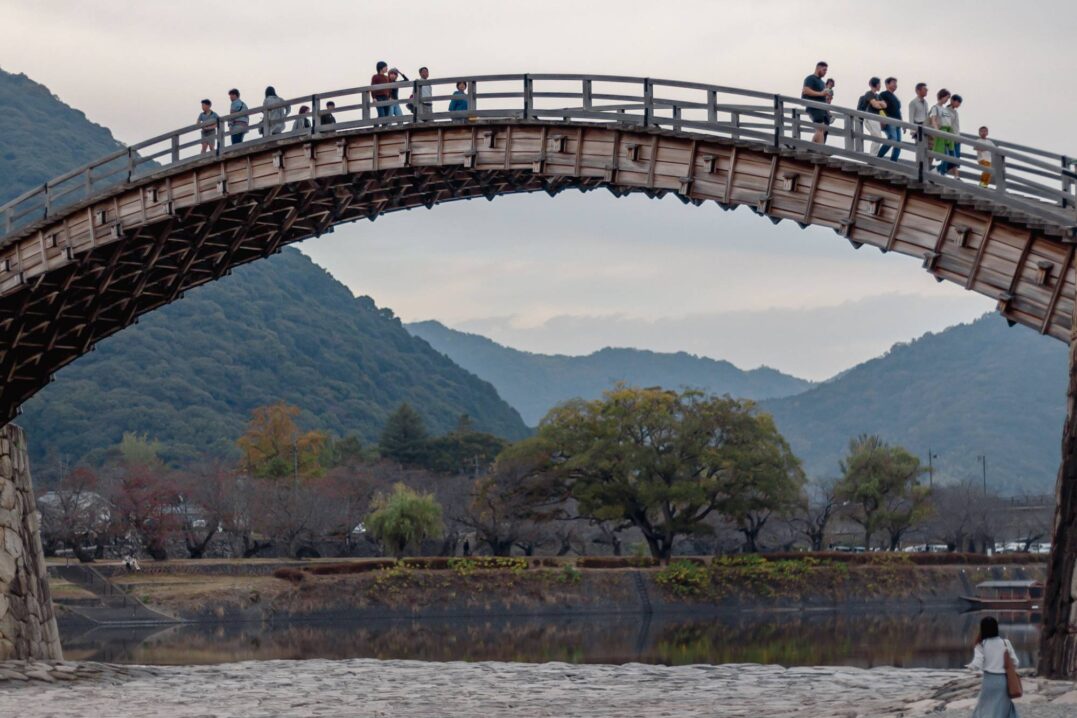
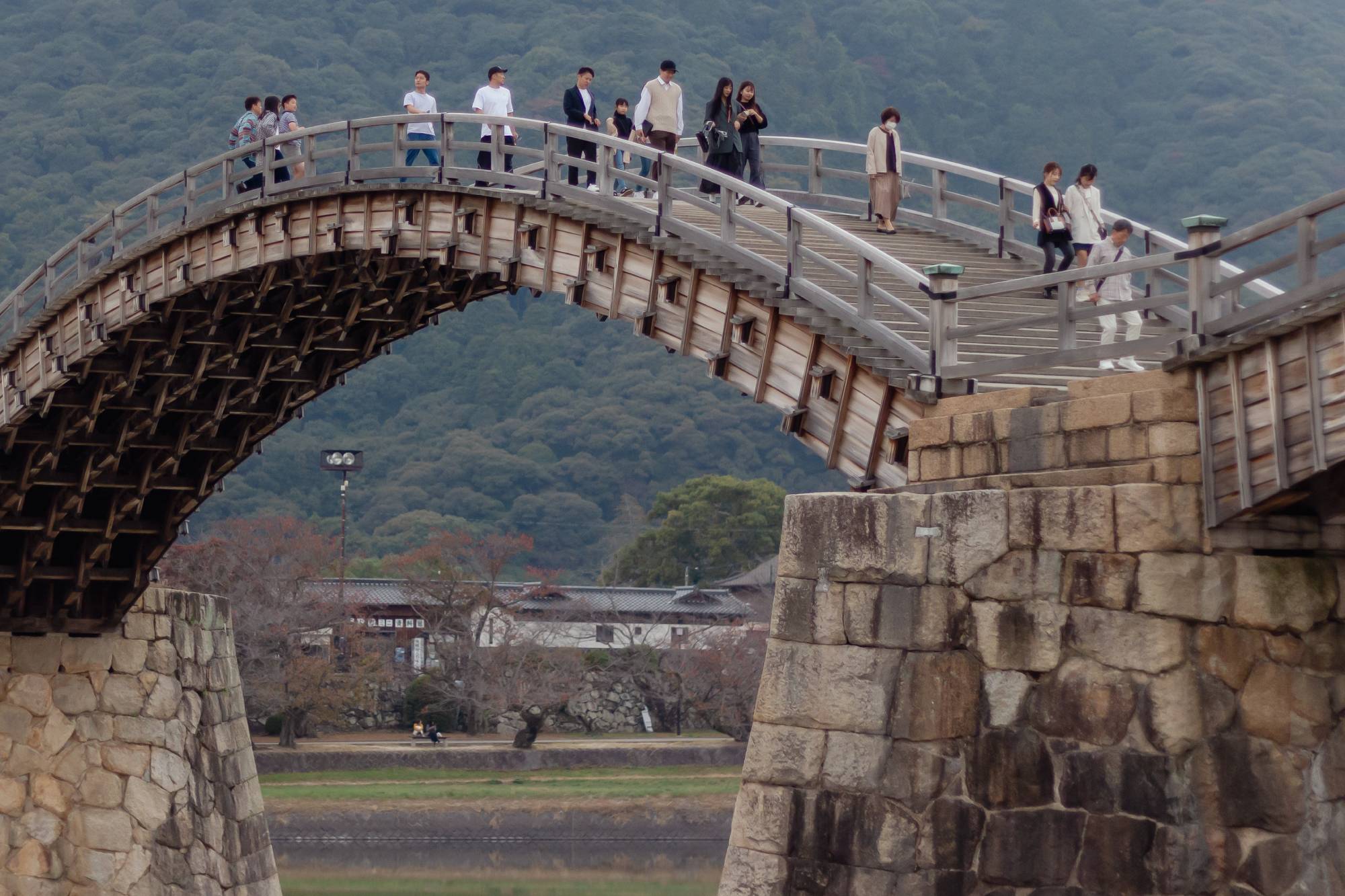
When Iwakuni was first established, it was here on both sides of the Nishiki River. After Iwakuni Castle was built in 1608, the Kikkawa family, who ruled over the castle town, decided to establish a bridge to cross the river moat. And the third feudal lord, Hiroyoshi Kikkawa, chose the curved design.
According to the Official Tourism Website for Iwakuni, Hiroyoshi got the idea from a Chinese monk named Dokuryo. The monk had a journal about sightseeing around the West Lake of China in which his hometown of Hangzhou was also depicted. Hiroyoshi saw a picture in the journal of several stone bridges, which inspired the look of Kintaikyo.
Hiroyoshi was determined to build a bridge that couldn’t be washed away. Much like the “unsinkable” Titanic, however, Kintaikyo also proved destructible. The initial design was completed in 1673, but by the next year, had washed away due to riverbed subsidence. After reinforcing the river bed, the bridge was promptly reconstructed in 1674.
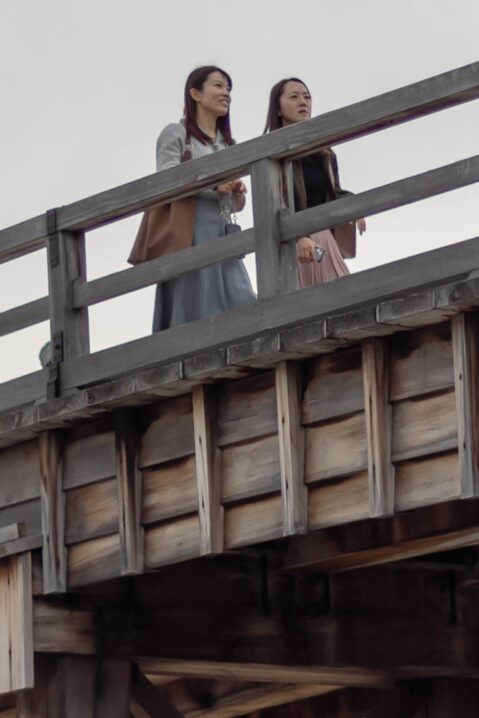
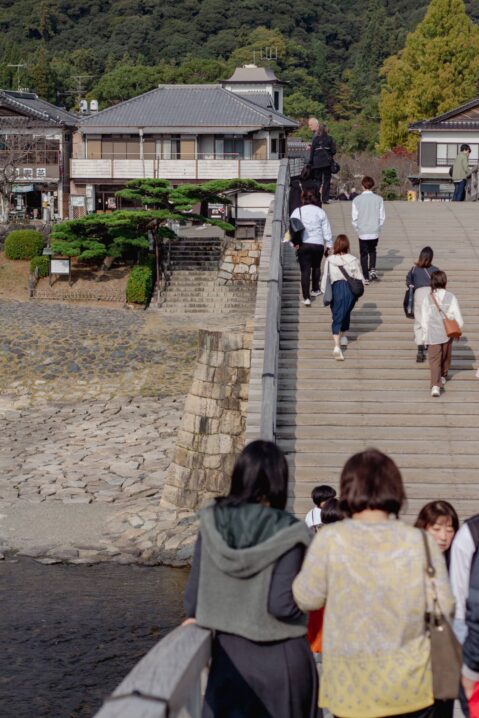
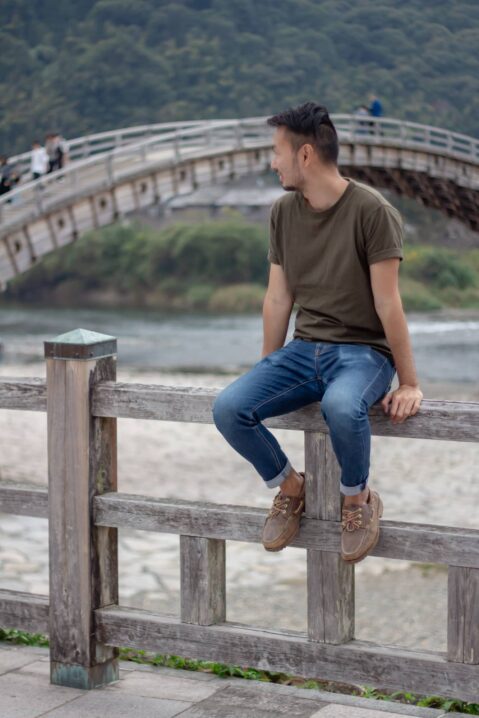
The bridge would go on to withstand the elements for another 276 years until 1950, when heavy floods caused by Typhoon Kezia washed it away. It took a few years, but in 1953 the bridge was rebuilt once more. In 2005, another typhoon struck, causing extensive damage. Approximately 40 million yen was needed to restore Kintaikyo, which has lost two piers from the first span. Thankfully, the superstructure remained intact.
Paying to cross Kintaikyo is a tradition of sorts that dates back to the Edo Period. Residents of the Iwakuni domain were charged a special tax, known as hashidemai, which was used to keep the bridge in tip-top condition. Since it’s made primarily of wood, Kintaikyo is prone to rot and decay. In order to detect any such problems early, the bridge undergoes periodical soundness surveys to this day.
The maintenance and upkeep has proved worth it, though, since millions of people still come to admire Kintaikyo’s beauty. It’s said that even feudal lords, who had to travel from their domains to Edo (modern-day Tokyo), would sometimes make a detour just to marvel at the bridge. Kintaikyo has also been the subject of many a famous painting by ukiyo-e artists, like Hiroshige and Hokusai.
Today, Kintaikyo is considered to be one of the most famous arched bridges in the world. In Japan, it’s also designated a National Treasure and is a popular spot for hanami, or cherry blossom viewing, in the spring. The bridge also serves as center stage for many local festivals, including the Kintaikyo Bridge Festival at the end of April and the Kintaikyo Fireworks Festival in early August.
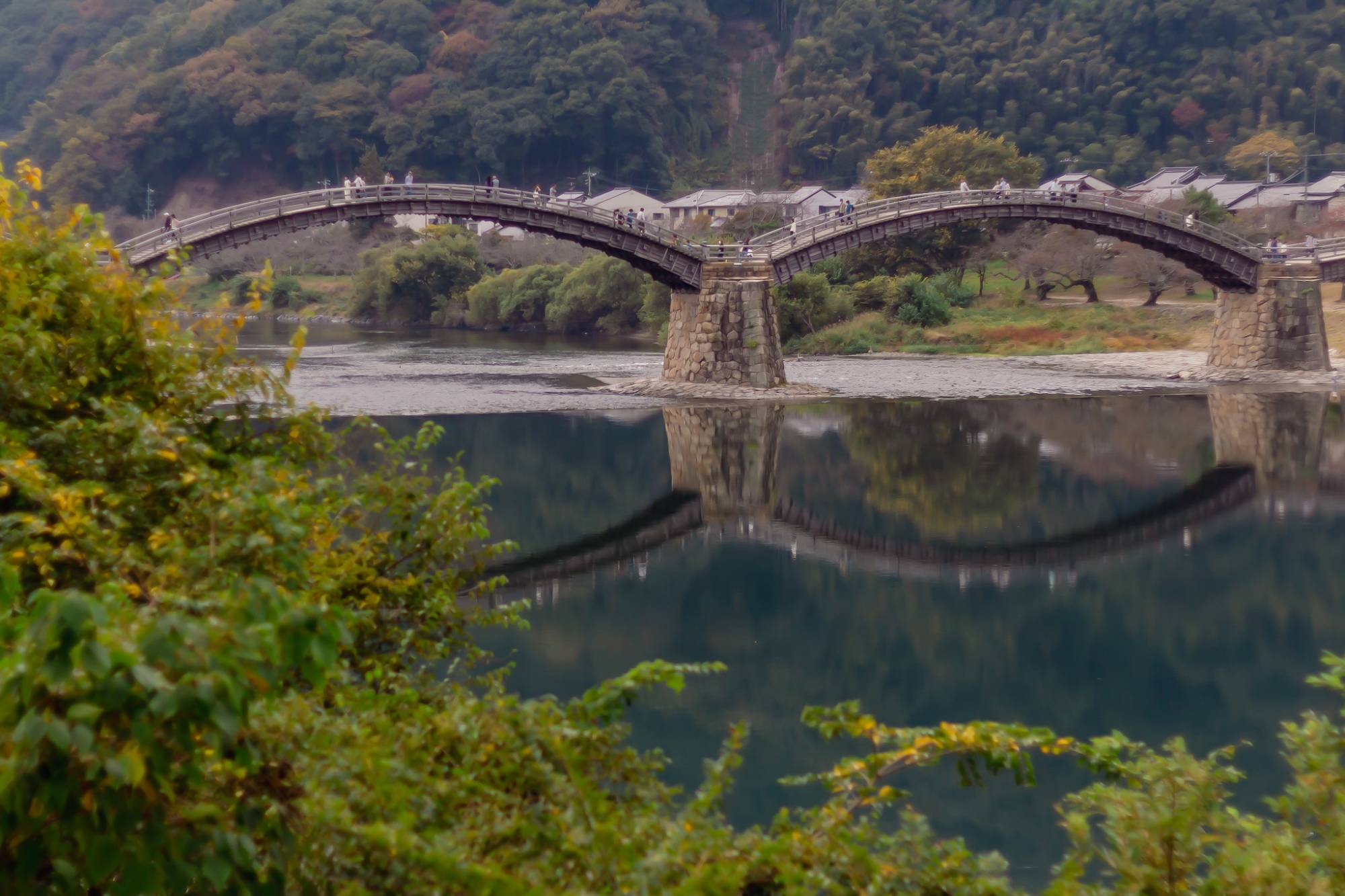
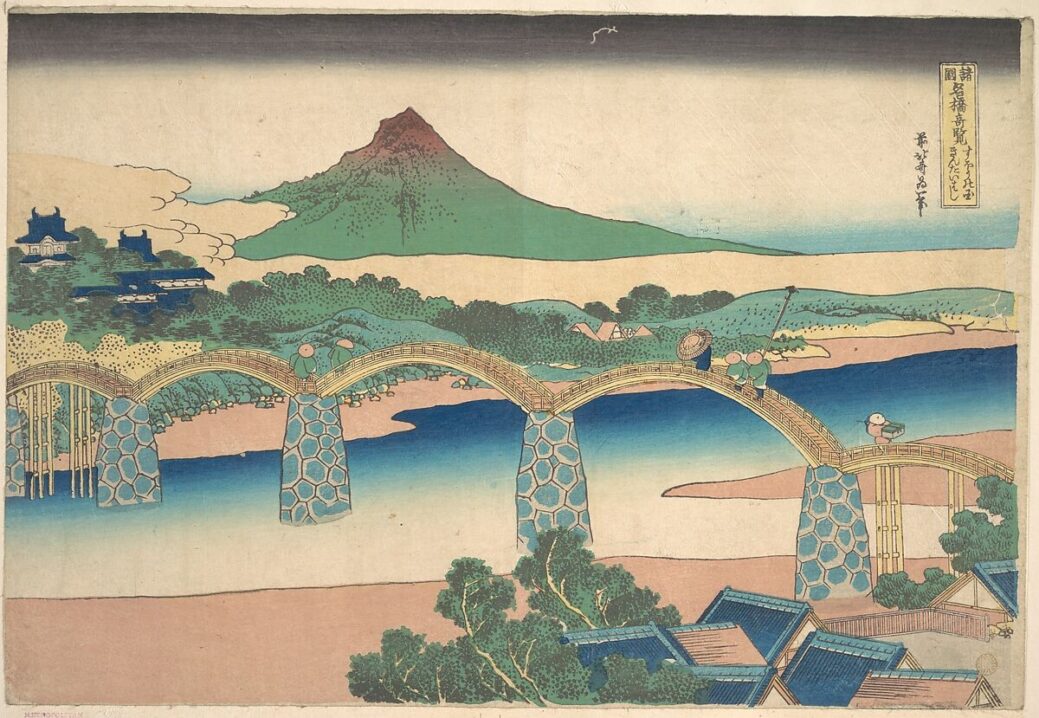
Visit Kintaikyo
To reach Kintaikyo, take the Kintaikyo Bus (11) from JR Iwakuni Station and get off at the Kintaikyo Bridge stop. The ride takes 20 minutes and costs 300円. You can also take the Kintaikyo Bus (21) from Shin-Iwakuni Station and get off at the Kintaikyo Bridge stop. It takes 15 minutes and costs 350円. The entrance to the bridge is just across the street.
Hours: 24/7
Admission: 310円
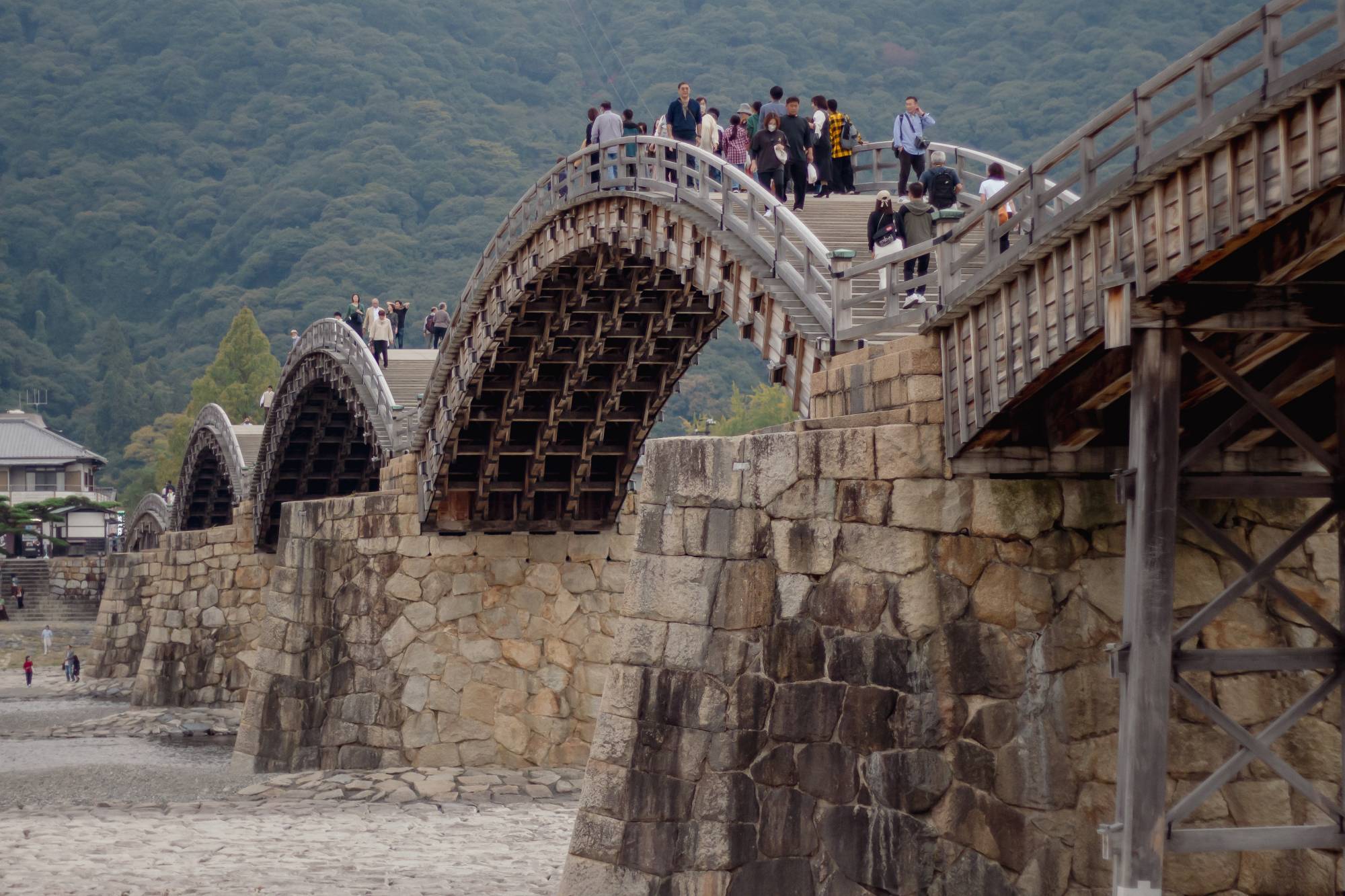

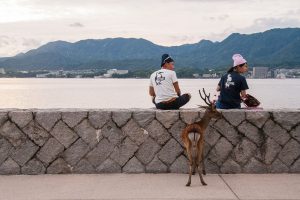
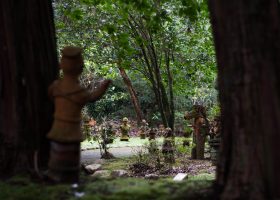
1 Comment
Join the discussion and tell us your opinion.
Interesting post